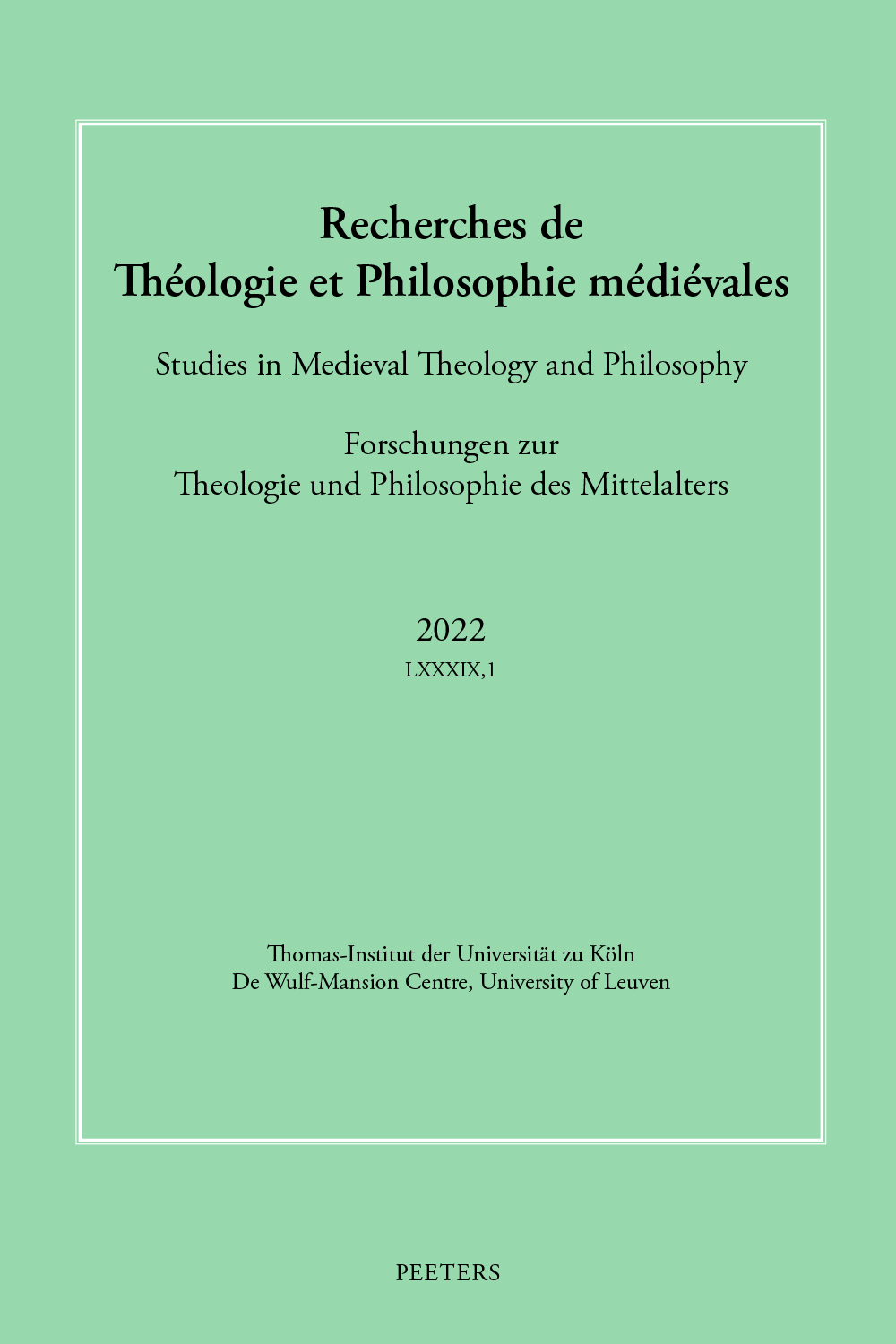 previous article in this issue previous article in this issue | next article in this issue  |

Preview first page |
Document Details : Title: Singing Women's Words as Sacramental Mimesis Author(s): TKACZ, C.B. Journal: Recherches de Théologie et Philosophie Médiévales Volume: 70 Issue: 2 Date: 2003 Pages: 275-328 DOI: 10.2143/RTPM.70.2.503655 Abstract : Singing and praying in the words of biblical men and women is basic to sacramental mimesis, i.e., Christian imitation of the actions of the saints with the intention of thereby opening themselves to grace. This evidence counters the “voiceless victim” paradigm prevalent in much feminist scholarship. In pre-Christian Jewish liturgy, the song of Miriam after the Crossing of the Red Sea was already important in the annual celebration of the Passover. Jesus emphasized the spiritual equality of the sexes in his teaching and ministry, and this led to increased visibility for women in Christian tradition: Susanna was the first of at least eight women interpreted as types of Christ. She was presented this way even within the synoptic Gospels themselves [see “Aneboesen phone megale: Susanna and the Synoptic Passion Narratives,” forthcoming in Gregorianium]. Moreover, the practice of presenting examples from both sexes in sermons and church decoration was so pervasive as to constitute a pastoral program of the Church. Such balanced representation of the sexes is found in both texts and art. The linguistic range of the evidence for the singing of women’s words includes Greek, Latin, Coptic, Syriac, Slavonic, and German. The artworks depicting women are from throughout the Christian world, including Dura Europos, Jerusalem, Egypt, Ethiopia, Cyprus, Syria, Armenia, Italy, France, Belgium, Germany. More than twenty biblical women are treated in the essay. Women’s words, quoted from the biblical record or imaginatively supplied, became the prayer of the whole congregation. Miriam’s words remain focal universally on Holy Saturday. The acclamations of Elizabeth and of the Virgin Mary became prominent early in both East and West (in the “Ave Maria” and as the “Magnificat”). Both Byzantine and Gregorian chant commemorated them and other women such as Eve, Esther, Judith, Sarah (Tob. 3:13), Susanna, Martha of Bethany, the Samaritan woman, the Canaanite woman, the woman with the ointment, the Samaritan woman, the ten virgins of the parable (Matt. 25:1-13), and especially the Holy Women at the Tomb (the Myrrhbearing women, including Mary Magdalene, Joanna, Mary the mother of James, and Salome). Their proclamation of the Lord’s rising became particularly important in Byzantine resurrection hymns used at Easter and year-round. With four other first-century female saints– Junia, Mariamne, Photina and Thecla– Mary Magdalene was deemed ἰσαπόστολος (isapostolos) “equal to the apostles,” because the angel commissioned her to announce the Lord’s Resurrection to the disciples. Martha’s profession of faith (John 11:27) is the fullest recorded in the Gospels and became the basis for a Byzantine communion prayer (“Πιστεύω, Κύριε” (Pisteuô, Kurie). Repeatedly, one finds that women’s words were sung at important Sunday feasts and during Holy Week. In Gregorian chant their words were sung over the course of several days. Susanna’s words are readily found in fifty Gregorian chant manuscripts (three breviaries and forty-seven antiphoners) from the ninth through fifteenth centuries, used in cathedrals, in monasteries and other religious houses, and in parish churches; an appendix lists these manuscripts. Throughout the continent–in Italy, Austria, Slovenia, Germany, Switzerland, France, The Netherlands, England, Wales–the varied communities of the church sang Susanna’s words. Moreover, her words as mediated through Gregorian chant were quoted by Bernard of Clairvaux in a sermon and by Hermann of Scheda in his account of his conversion from Judaism. These men used Susanna’s words to evoke her as a type of Christ and thereby to seek to be like him themselves. That is, they experienced sacramental mimesis through singing women’s words. |
|


